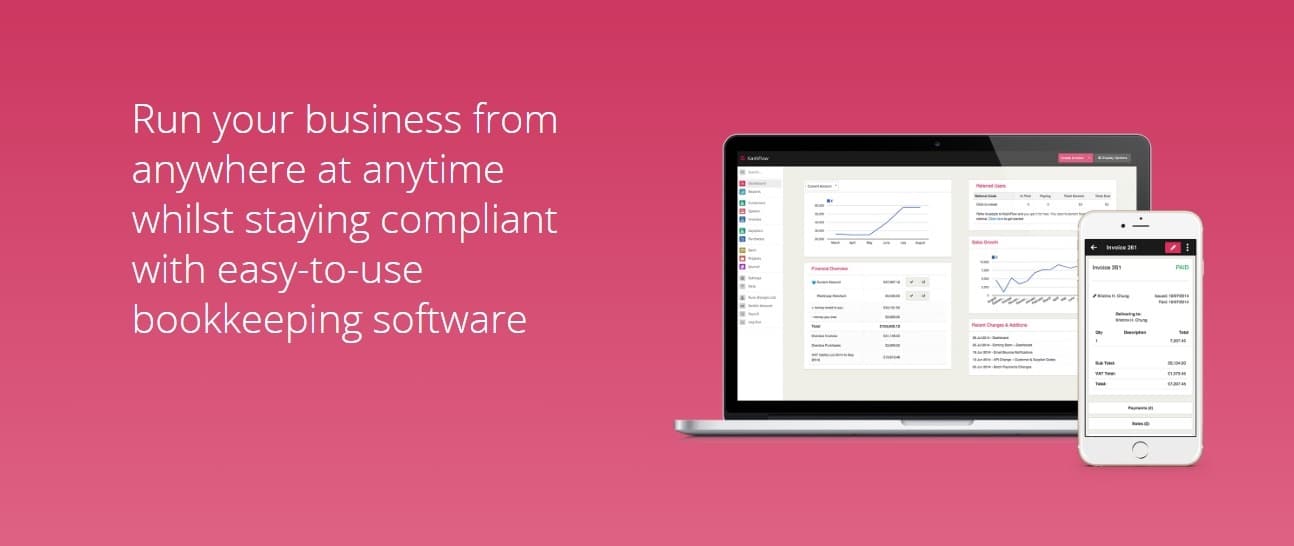Staying on top of your bookkeeping ahead of Making Tax Digital
With the new Making Tax Digital system coming into effect early next year, businesses over (or approaching) the VAT threshold will need to make sure they have a bookkeeping system in place that is both simple to update and easy to understand.
A recent survey found 58% of accountants are expecting to provide bookkeeping services to their clients from April 2019, but doing so could generate extra costs in accountant fees that some small businesses may not be able to afford.
With that in mind, we’ve created this guide for small businesses who want to keep their bookkeeping in house, but not spend any more time or energy once Making Tax Digital for VAT comes into effect in April 2019.
What does MTD expect?
Making Tax Digital is a new way of reporting on tax, set to be introduced by HM Revenue and Customs from April 2019. Businesses who are above the VAT threshold will have to register for the initiative and deliver quarterly reports to HMRC.
You can learn more about Making Tax Digital in our dedicated hub, which is filled with free resources written specifically for small businesses like yours.
What do these quarterly reports contain?
Each report will have to contain a set of designatory data including your business name and VAT registration number. It will also include sections for tax payable and allowable, any adjustments required by VAT rulings, and other information like the different rates of VAT you’re paying.
Staying on top of your bookkeeping
Sending regular updates to HMRC can seem like a scary prospect, especially if bookkeeping isn’t your strong point.
With regular reports going straight to HMRC in a different format and over a different timeline, many small business owners are worried about the risk of sending the wrong numbers and the potential fallout, even if it’s just the hassle of having to update and resubmit these forms.
Even those who feel confident with their numbers aren’t likely to be pleased about the increased amount of time they’ll have to spend on their reports.
So with that in mind, here are our top tips on keeping on top of your bookkeeping once MTD is in effect.
Update your books regularly
Rather than spend time sorting through receipts and invoices at the end of each month, introduce a system where you update your books and files on a more regular basis – even at the end of each day if possible.
If you’re using cloud accounting software, you can update your records on the go – either on a laptop or from your mobile phone. You can also sync your invoices and bank accounts into the same place, meaning you’ve got the full picture available on one screen. You can learn more about cloud accounting software here.
Make sure your paperwork is safe
VAT records need to be kept safe for at least 6 years, so it’s important that your storage is secure. If your documents are irreplaceable (like a cheque book stub) then keep them in fireproof storage.
Once Making Tax Digital comes into effect, you’ll have to submit your records electronically. This means you’ll have to digitally upload copies of any paperwork (like cheques and paper receipts or invoices) and send these digital files over.
There’s a strong case for moving all of your paperwork into a digital format. It’s easier to retrieve and amend your files, faster to search for something specific. It’s more secure – with backups available on different servers. You can learn more about the security advantages of cloud software here.
Simplify where you can
While your accounts are more complex once you’re paying VAT, the core remains the same: track all of the money moving in and out of your business. From here, remember to track where everything came from and went to – especially if you’re charging VAT.
If you don’t already, give each invoice a unique number or reference code so that it’s easy to track where you’re up to.
Keep an eye on your turnover
Obviously, you need to make sure your reports and running in the right direction in terms of business profits and balance sheets. But you also need to know if your taxable turnover is going to cross the VAT threshold of £85,000. If it is, then you’ll have to register for VAT and start getting ready for Making Tax Digital.
That’s why businesses are being encouraged to adopt digital accounts before their project 2020 MTD deadline. If you’re already in the habit of updating and tracking your business finances with one, MTD-ready software, then filing quarterly VAT reports won’t be a shock to the system.
Include as much information as you can
The more you can include in your books and accounts, the better a picture you can paint of your business’s health. Even keeping track of petty cash payments can help you work out where your money is going and coming in from.
It’s also good practice to check your bank statements (or include a bank feed in your accounting software) so that you can check your bookkeeping records match your banking statements. This way, it’s easier for you to make sure you’re paying the right amount of tax.
Keep reading
If you’re approaching the VAT threshold and want to get to grips with the basics, take a look at our free guide to VAT – available here.
To learn more about Making Tax Digital, visit our hub here.
To see how KashFlow makes managing your business’s books and accounts easier, start a free trial today.


